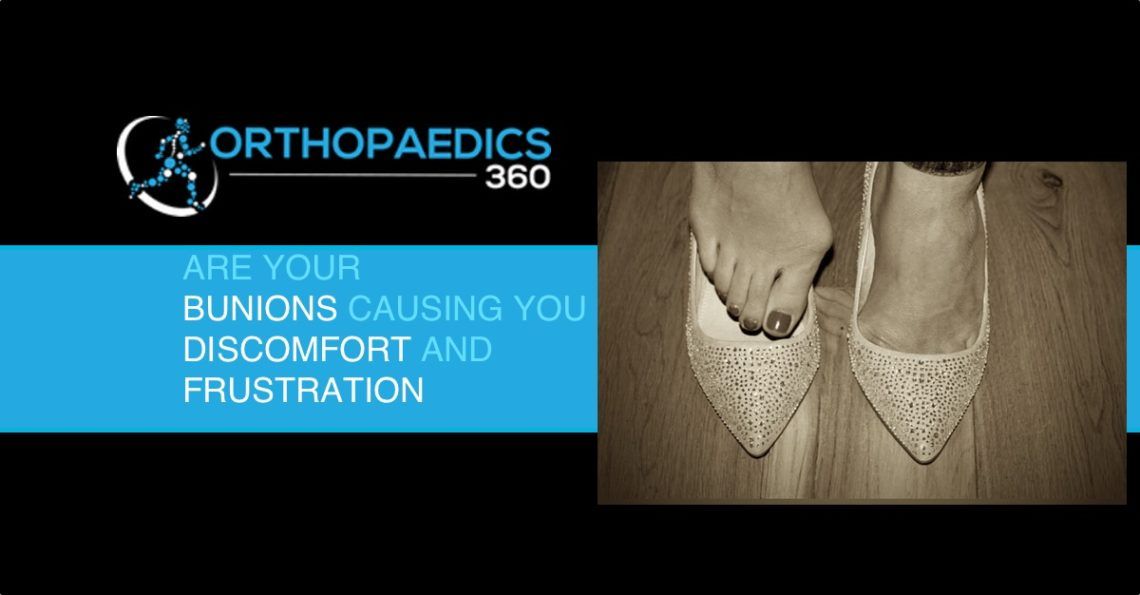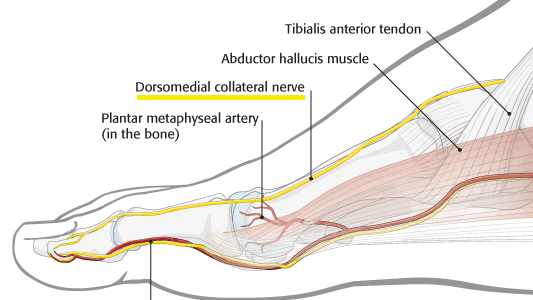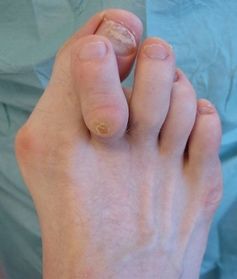
What causes bunion pain?
Up to a third of the adult population have bunions, but not everyone experiences bunion pain. If you are one of the ‘unlucky’ ones to have these symptoms, you have probably often wondered what the cause of this bunion pain is. Dr. Smith takes a look at some of the common reasons that your bunions may be painful, and what you can do to help alleviate bunion pain.
Bunion pain – Direct Irritation of the bony bump on footwear
A bunion occurs due to mal alignment of the bones of the great toe, resulting in a prominent bony bump developing on the inside of the foot. This bony bump represents the 1st metatarsal head, and can be the cause of a great degree of pain. Many patients with bunions have difficulty wearing their preferred footwear due to the prominence of this bone. Having a bunion effectively ‘widens’ your forefoot and rubs on the inside of the shoes that you are wearing. If you like to wear narrow shoes or shoes with high heels, you will experience this discomfort even more. I am sure many of you cant wait to get your shoes off at the end of the day. There is often an associated reddened area over this bony bump that represents the site of rubbing/friction between your bunion and your footwear. While you cant ‘remove’ this bony bump without surgery, there are certain wider shoes that can be worn to help reduce the bunion pain related to this rubbing. Just don’t expect them to be the most fashionable!
Bunion pain – Development of arthritis in the big toe
Bunions may develop as early as your adolescence or teenage years. Bunions themselves do not represent arthritis. Arthritis is the process whereby the cartilage lining of the ends of the bones are damaged. While it is possible to have a severe bunion deformity without arthritis, long standing bunion deformities can certainly lead to the development of arthritis within the great toe (1st metatarsophalangeal joint). As with elsewhere in the body (Hips, Knees, Hands etc), arthritis typically spells pain. Once arthritis is present, it is not possible to recreate the original cartilage in this area. Depending on the degree of arthritis, other treatment options may need to be considered.
Bunion pain – Transfer for weight bearing forces to the smaller toes
The great toe takes most of the responsibility for weight transfer and propulsion during walking. If the great toe is unable to function normally, as may be the case in the setting of a bunion, additional forces are transferred across to the smaller toes of the foot (usually 2nd, 3rd, and 4th). These smaller toes are not used to having to manage such as degree of force, and often become painful with the development of callus formation and bursitis. This condition is termed ‘Transfer metatarsalgia‘ and results in ball of foot pain.

Bunion pain – Irritation of the local skin nerve
All of the body, tiny ‘cutaneous’ nerves supply sensation to the skin. The big toe is no different. One nerve in particular, the dorsomedial branch to the hallux (great toe), can get stretched in the setting of a bunion deformity. While this typically causes numbness and paraesthesia (altered sensation) over the inner aspect of the great toe, it is possible for this nerve irritation to result in a sharp burning pain in the region. This can be further exacerbated with the use of tight / narrow shoes. Some medications are specifically designed to help ease this type of ‘nerve’ pain and may be helpful. Taking the tension off the nerve by re-aligning the great toe may help these symptoms.

Bunion pain – Irritation of the adjacent 2nd toe
When bunion deformities get severe, the big toe can drift across to cause irritation of the adjacent 2nd toe. The big toe can position itself above or below the 2nd toe and result in local irritation and rubbing of the 2nd toe. Callus formation may occur resulting in pain in this region. With time, the 2nd (and sometimes the 3rd) toe may develop a ‘fixed’ abnormal posturing (hammer toe) that further worsens the situation.
If the bunion deformity is still flexible, it may be possible to wear a bunion sleeve or toe spacer in an attempt to stop the big toe constantly rubbing against the 2nd toe.
As you can see there are many possible causes of bunion pain once the mal-alignment of the big toe occurs.
Dr. Smith performs keyhole realignment procedures of the bunion to help ‘normalise’ the toe’s alignment and alleviate pain.
